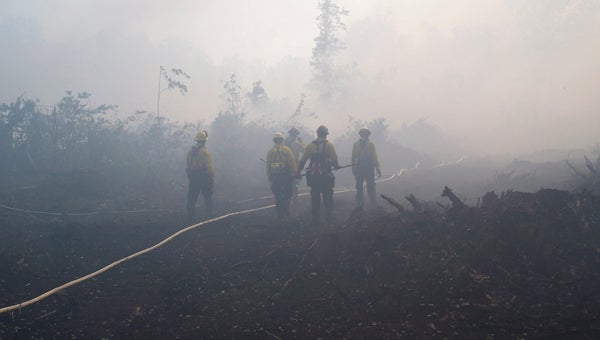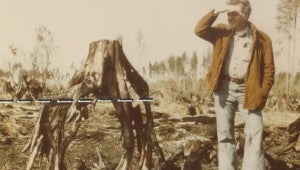The smell of fire
Published 10:58 pm Monday, July 21, 2014

Wildland firefighters fight a fire in the Great Dismal Swamp National Wildlife Refuge in 2011. (Courtesy Great Dismal Swamp National Wildlife Refuge)
While most scents for which Suffolk is famous — peanuts and coffee, for instance — are pleasant, there’s one that’s not so enjoyable that has the capability to spread far beyond the scent of goobers.

A man shows off the aftermath of a 1975 fire in the refuge, with a dotted line marking the peat level before the fire. (Courtesy Great Dismal Swamp National Wildlife Refuge)
In 2011, smoke from a wildfire in the Great Dismal Swamp National Wildlife Refuge reportedly triggered 911 calls as far away as Baltimore. Even Hurricane Irene, which dumped an estimated 1.7 billion gallons of rain on the blaze, was not enough to extinguish it entirely. It burned for nearly four months and consumed 6,400 acres before finally being declared out.
But it wasn’t the first wildfire in the refuge in recent years. A 2008 blaze burned about 5,000 acres. Fires in 1975 and even as far back as 1930 — before a portion of the swamp became a refuge — changed the landscape of the swamp.
A $3.13 million investment by the U.S. Department of the Interior, announced in 2013, aims to make severe wildfires in the refuge less likely. About 15 water control structures will be installed with the money and should raise the water table and slow the drainage of the swamp. The North American Wetlands Conservation Fund also contributed $1.4 million to the project of re-wetting the swamp, which was drained for logging in the 18th and 19th centuries.






